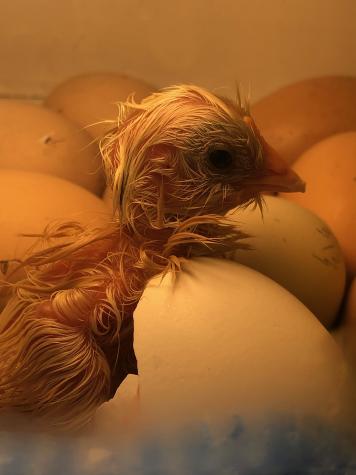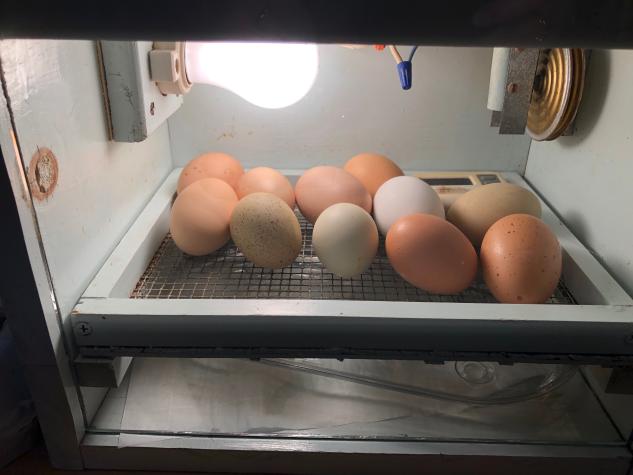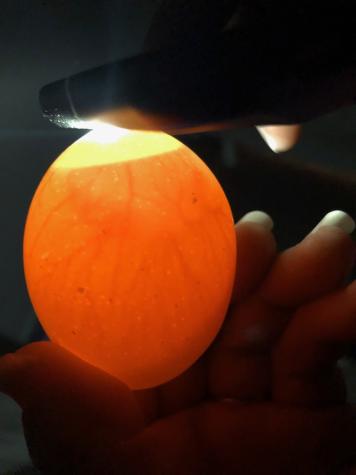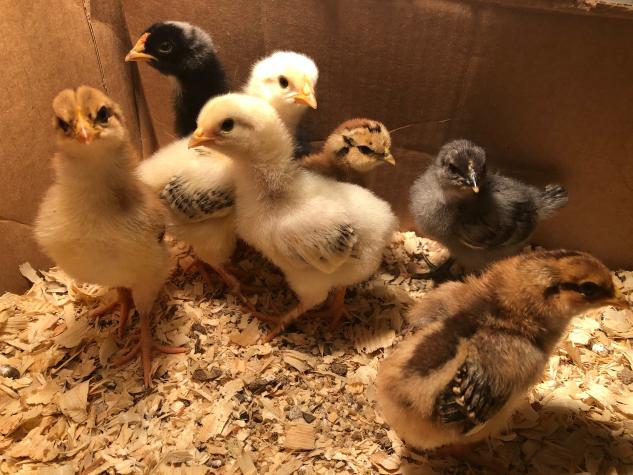Volunteers adopt incubating eggs to continue 4-H classroom project.
COLUMBIA, Mo. – Laura Browning never expected to find herself an adoptive parent to three incubators’ worth of chicks — or tending to 19 newly hatched birds in brooders in her garage. But chicks hatch according to their own calendar, oblivious to social distancing and school closures.
As it happened, the state’s COVID-19 response coincided with an annual spring rite across Missouri as 25,000 students, from pre-school through middle school, welcome incubators and clutches of chicken eggs into their classrooms.
The centerpiece of this effort is the Missouri 4-H Embryology in the Classroom project, which guides youth through about two weeks of a chicken’s development — roughly seven days of incubation through hatching and initial growth — until chicks and incubators are returned to the 4-H county extension offices that facilitate the egg and incubator donations.
This year, schools started closing just as suppliers were delivering eggs. But no one wanted to simply abandon the popular project that’s been a staple of schools’ spring curricula since at least the early 1980s.
“Embryology is such a fun hands-on introduction to the scientific thinking process: how to come up with hypotheses, to design and monitor experiments, to gather and record data,” Browning said. “If the cuteness of the chicks can be a bridge to science, that’s a win!”
So Browning, a University of Missouri assistant extension professor and state 4-H specialist in natural resources, volunteered to help: The plan, she said, was hatched “out of sheer crisis, well, out of necessity I guess is a better way to say it.”
Each county worked to enlist classroom teachers and 4-H and extension faculty, staff and volunteers across Missouri to take eggs home; hence, the three incubators in the front hallway of Browning’s own Boone County home.
Browning then delivered embryology lessons at 5 p.m. daily via Missouri 4-H QuaranTIME Facebook Live programming.
Browning is quick to point out that these options supplement the many inventive embryology lessons and experiments local teachers are conducting directly with their own students. Jessie Furgins, an instructor with MU Extension in Jackson County, for instance, has been helping teachers in her area with Zoom lessons based on her own clutch of eggs.
“Thank you! This is a very memorable activity/lesson [for] my kindergarten students,” wrote Laura Vogt, of Timothy Lutheran School in Blue Springs, in an email. “Many of my former students will pop in to ask, ‘When do you get the chicks this year?’ We learn so much, and the kids really do remember! Even with the Coronavirus situation, we were able to share the experience with our students!”
While nothing can supplant the experience of raising eggs in the classroom, the virtual course has revealed surprising benefits. The online project can extend much longer — the full 21 days of gestation, hatching and growth — than is feasible in a classroom with space and other limitations.
And children and families — anyone, really — can tune in from anywhere anytime to learn about embryology and the scientific method.
“I’m seeing sparks of curiosity in the online comments from all over,” Browning said. “People are finding it and saying, ‘My gosh, I’ve never even thought or known about this before!’ That’s really good.”
Photos available for this release:
Week-old chicks
A week-old chick. When schools closed due to COVID-19, volunteers across Missouri were needed to bring home incubators and chicken eggs to continue the Missouri 4-H Embryology in the Classroom project. Photo by Laura Browning.
Candling an eggs
‘Candling’ eggs allows students to watch the development of an embryo inside its shell. Photo by Laura Browning.
Eggs in an incubator
State extension specialist Laura Browning brought three incubators to her Boone County home so the eggs could continue to develop. Photo by Laura Browning.
Newly hatched chick
A newly hatched chick wonders what life has in store. Photo by Laura Browning.
Writer: Katherine Foran



